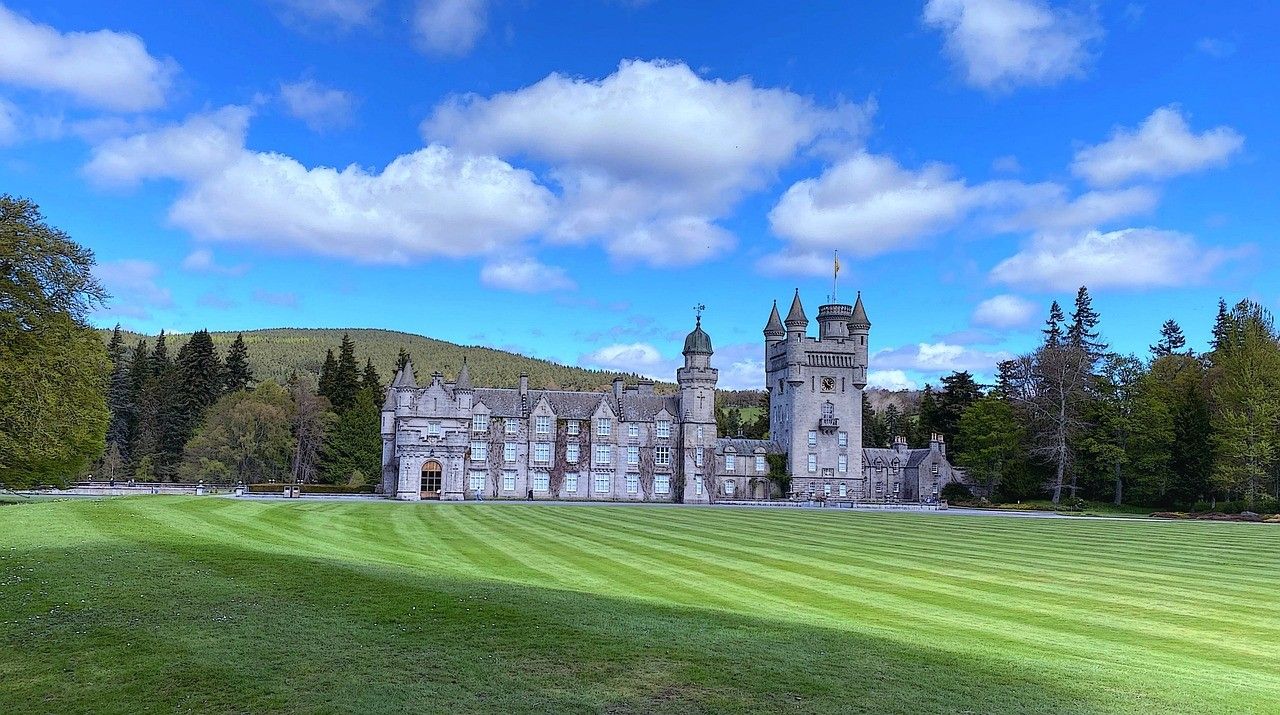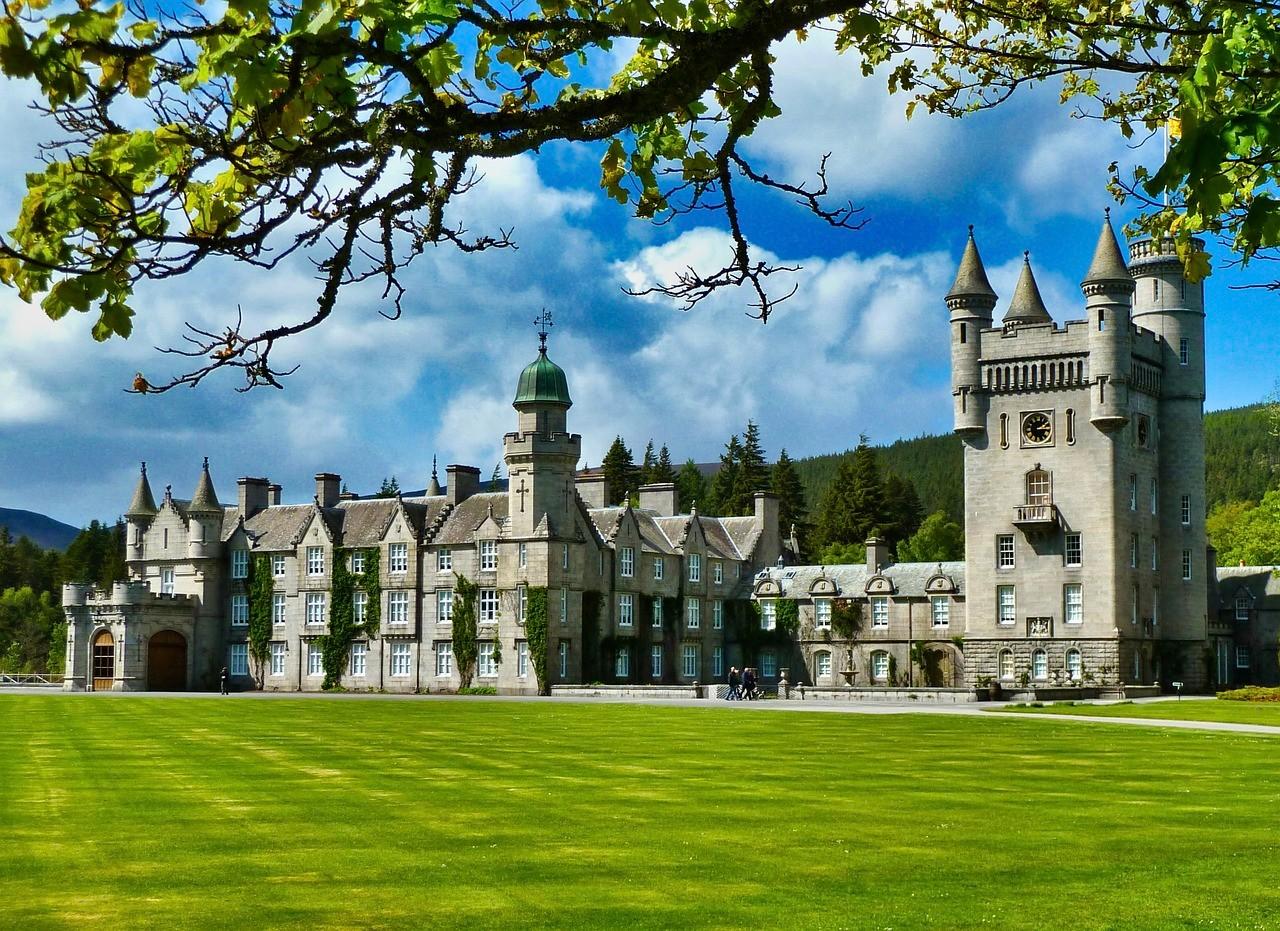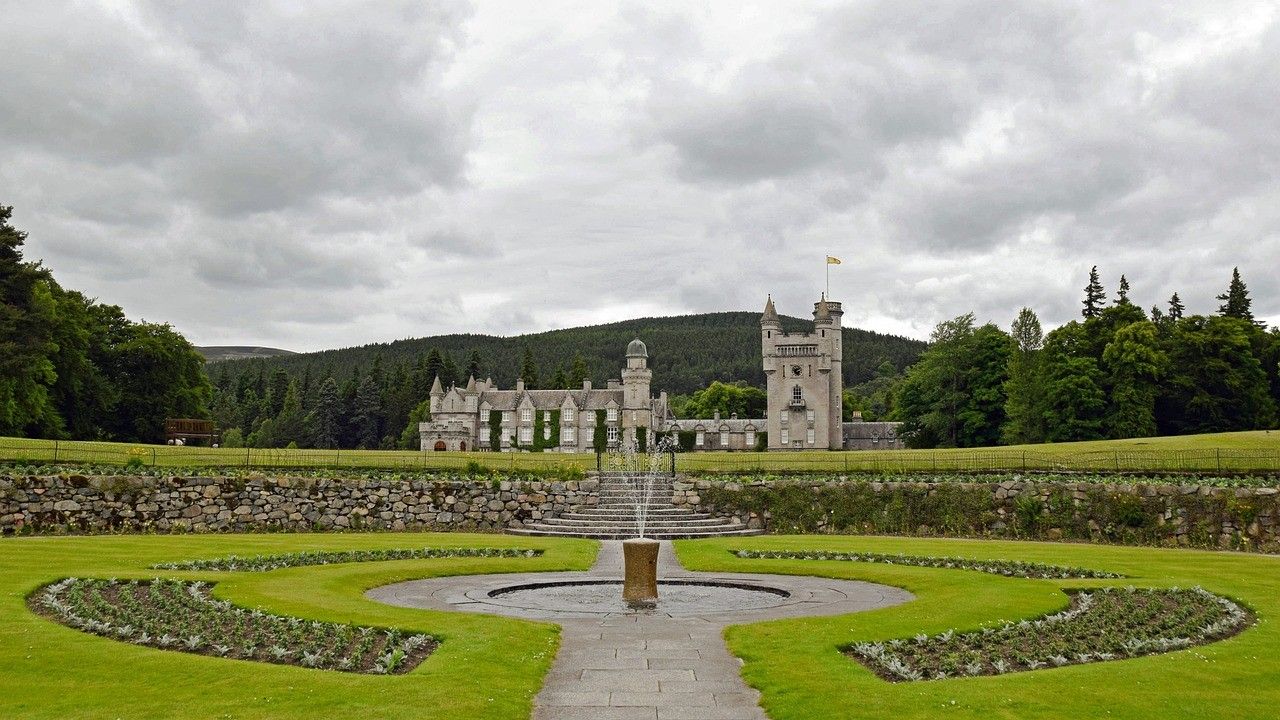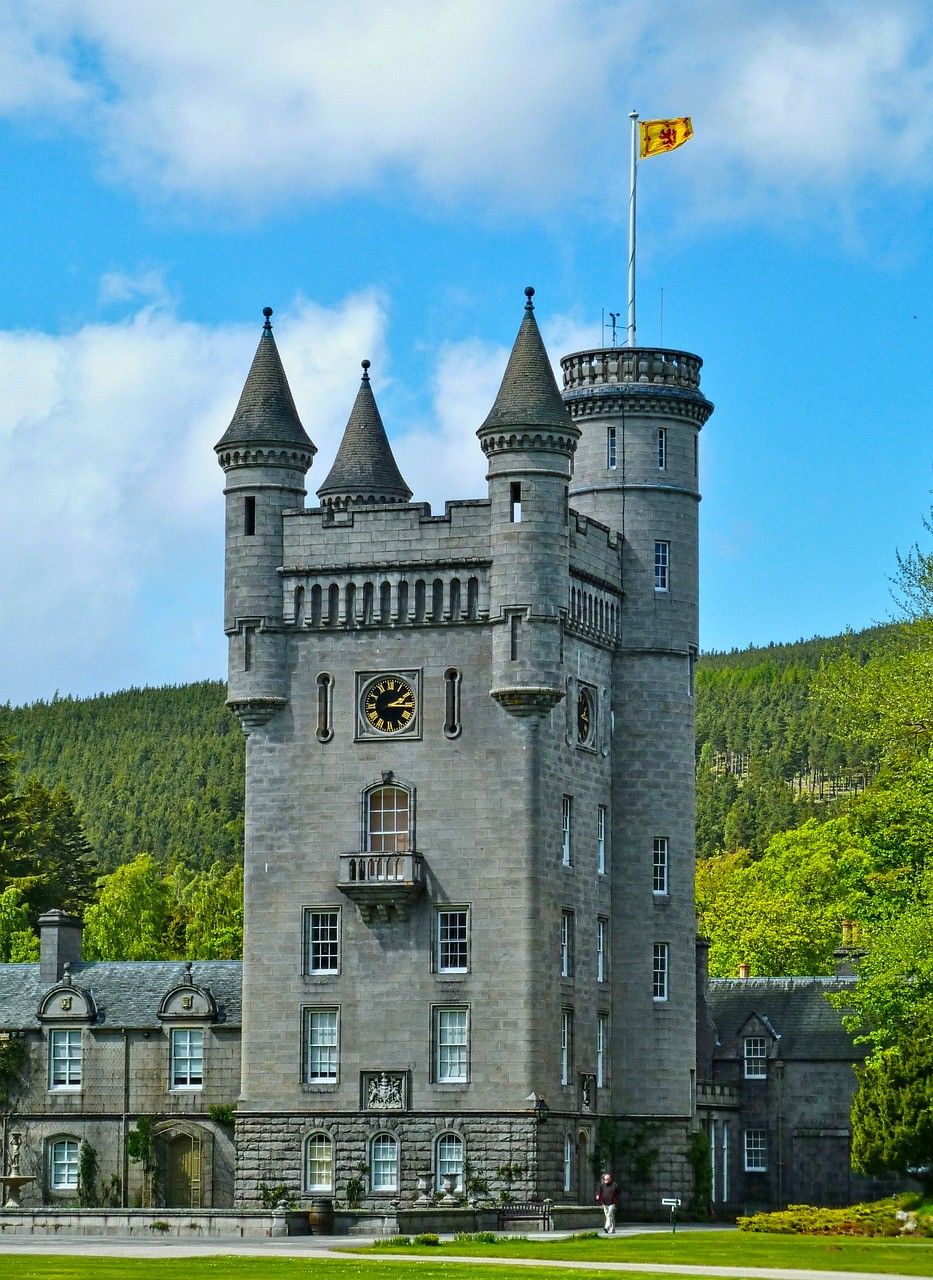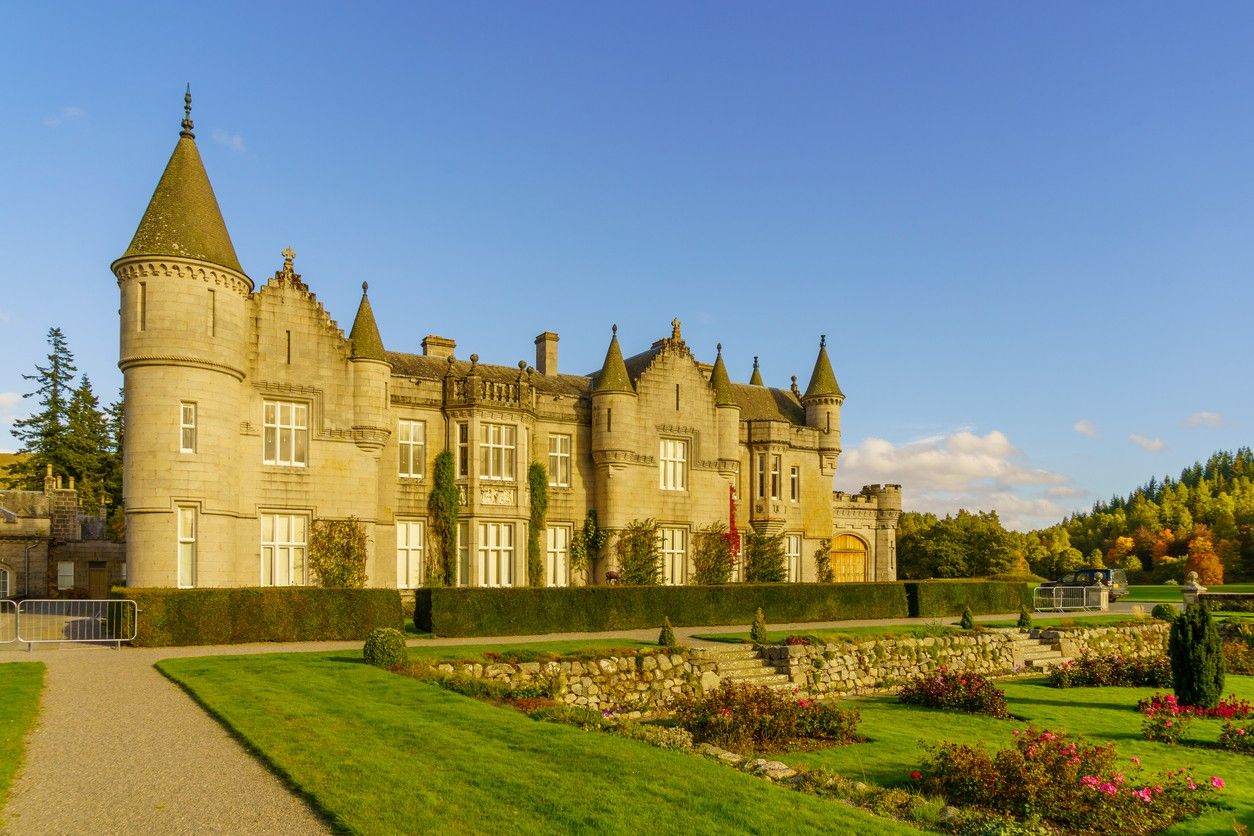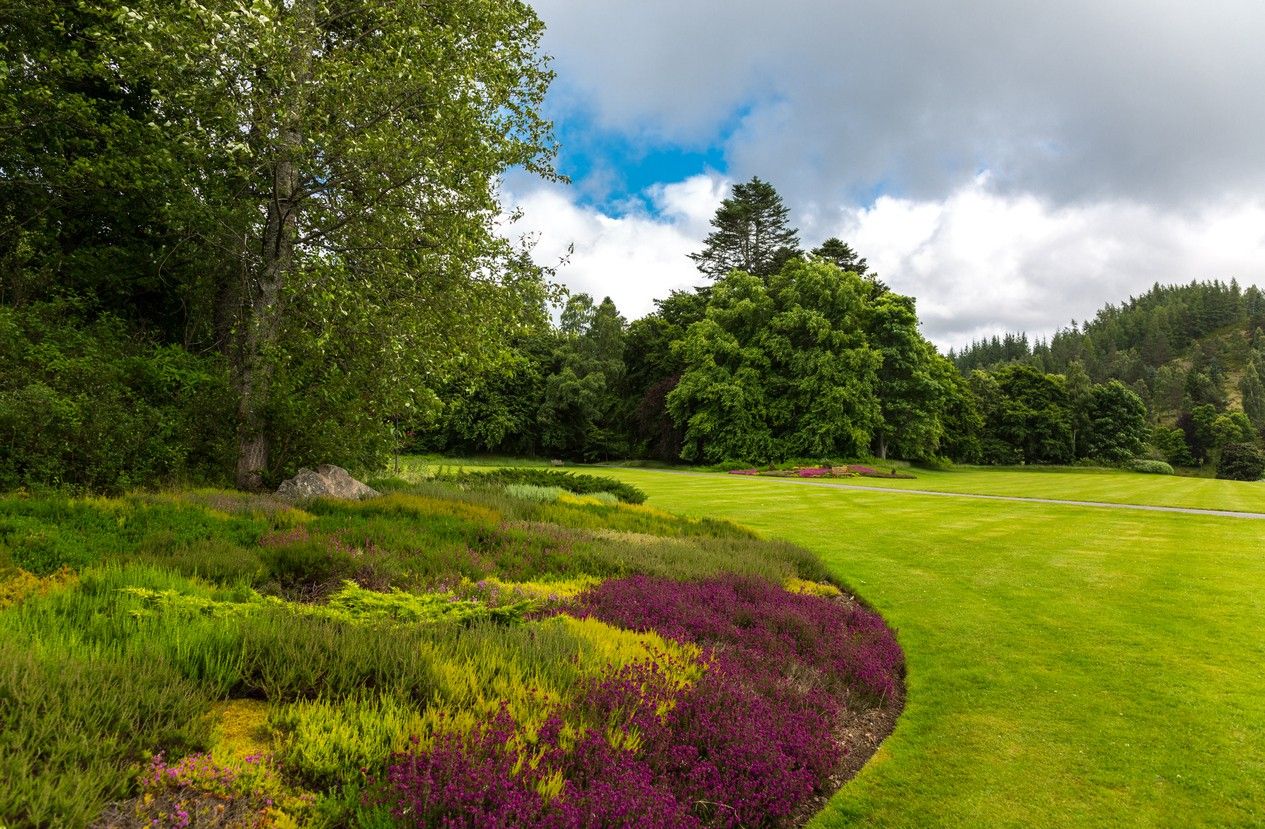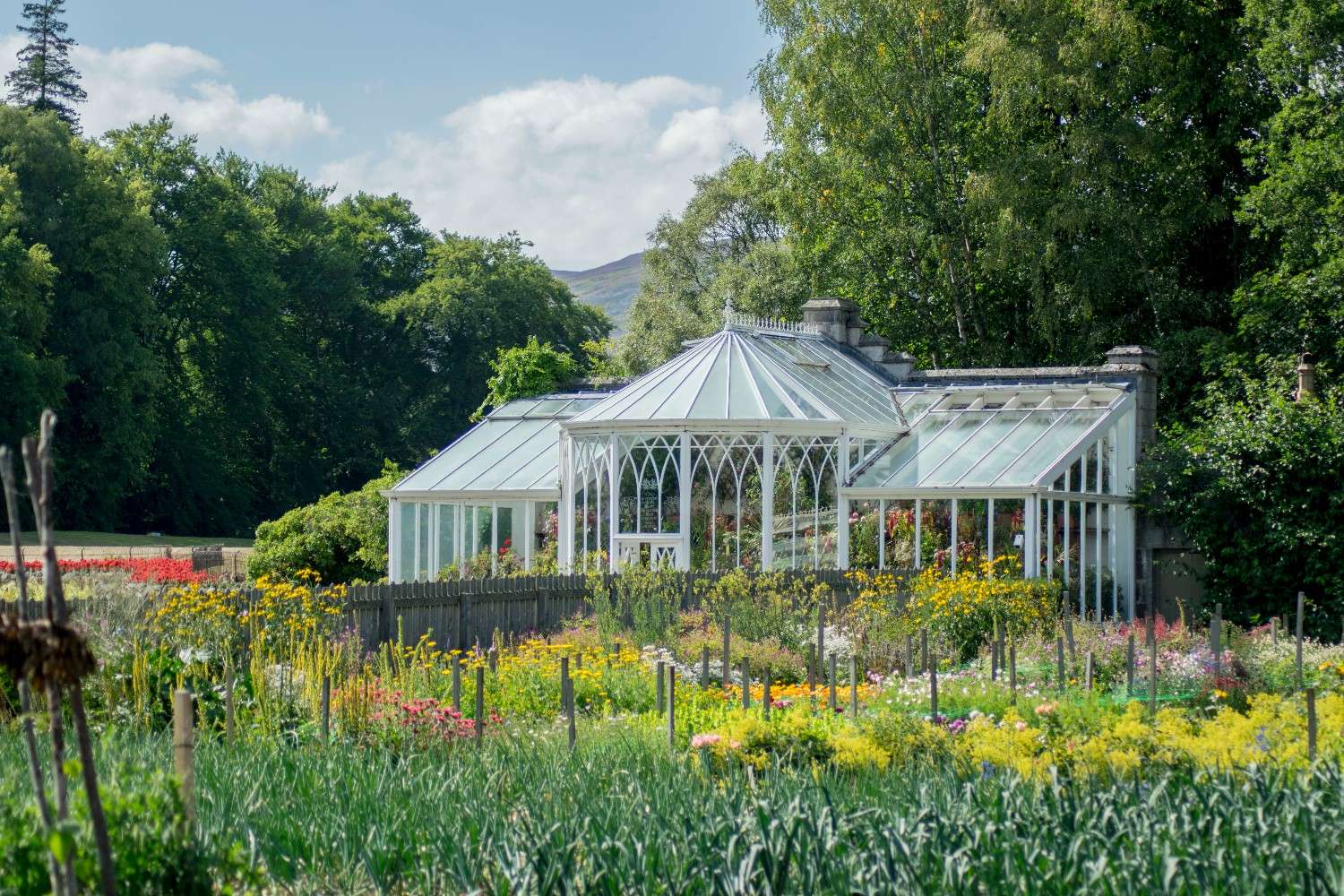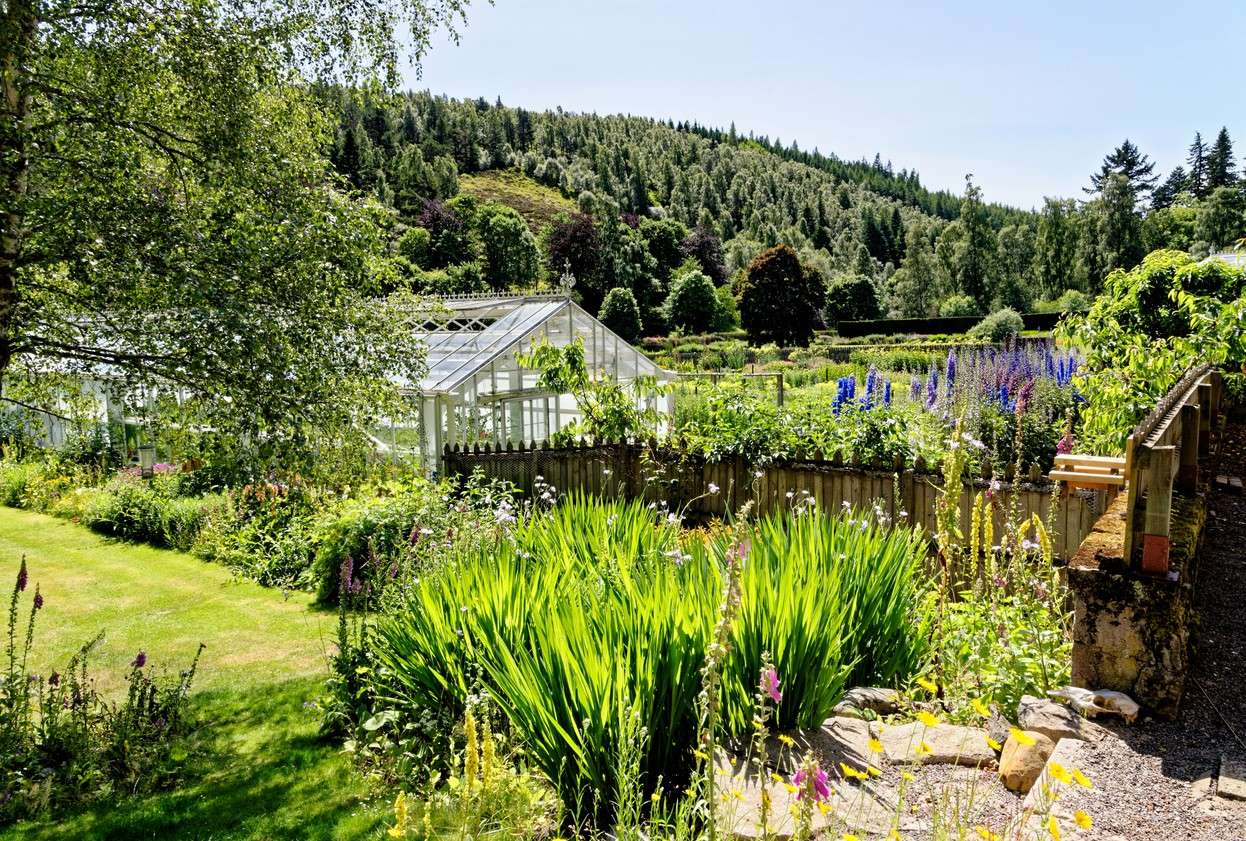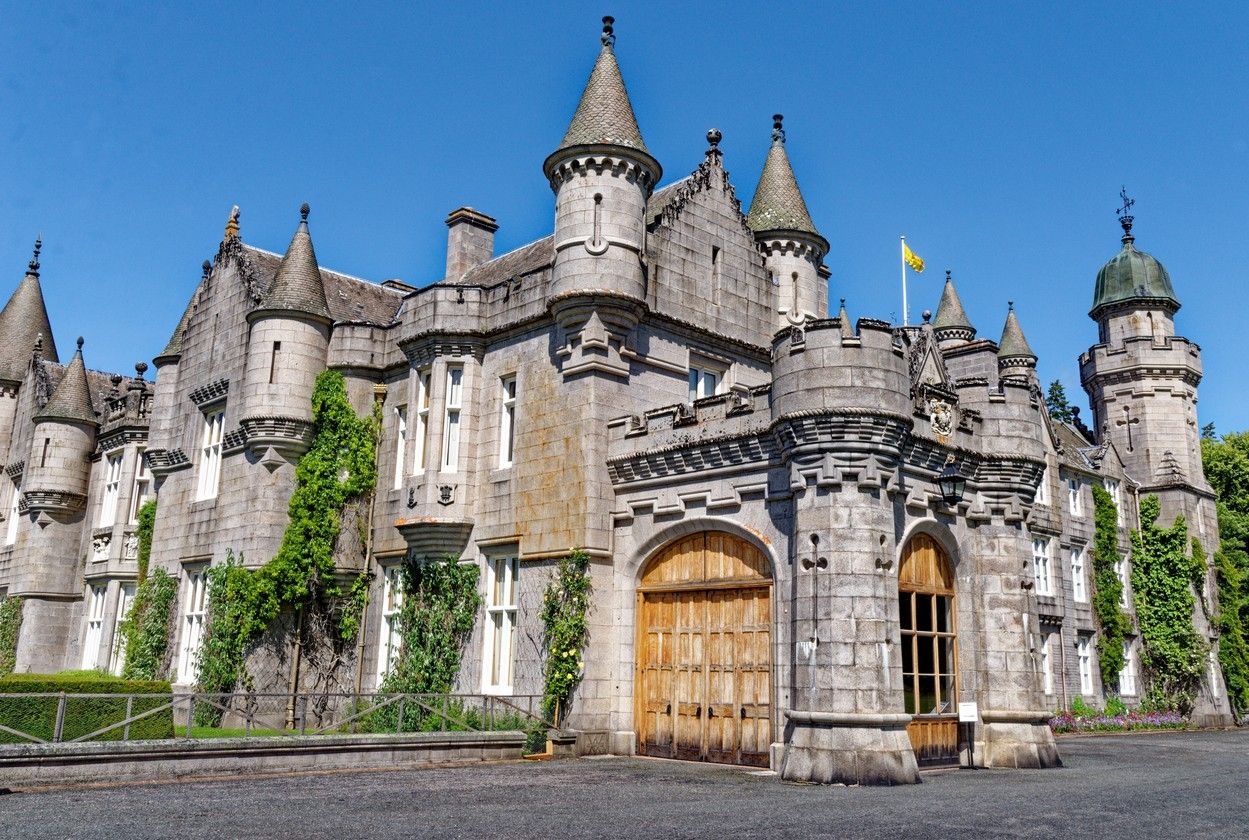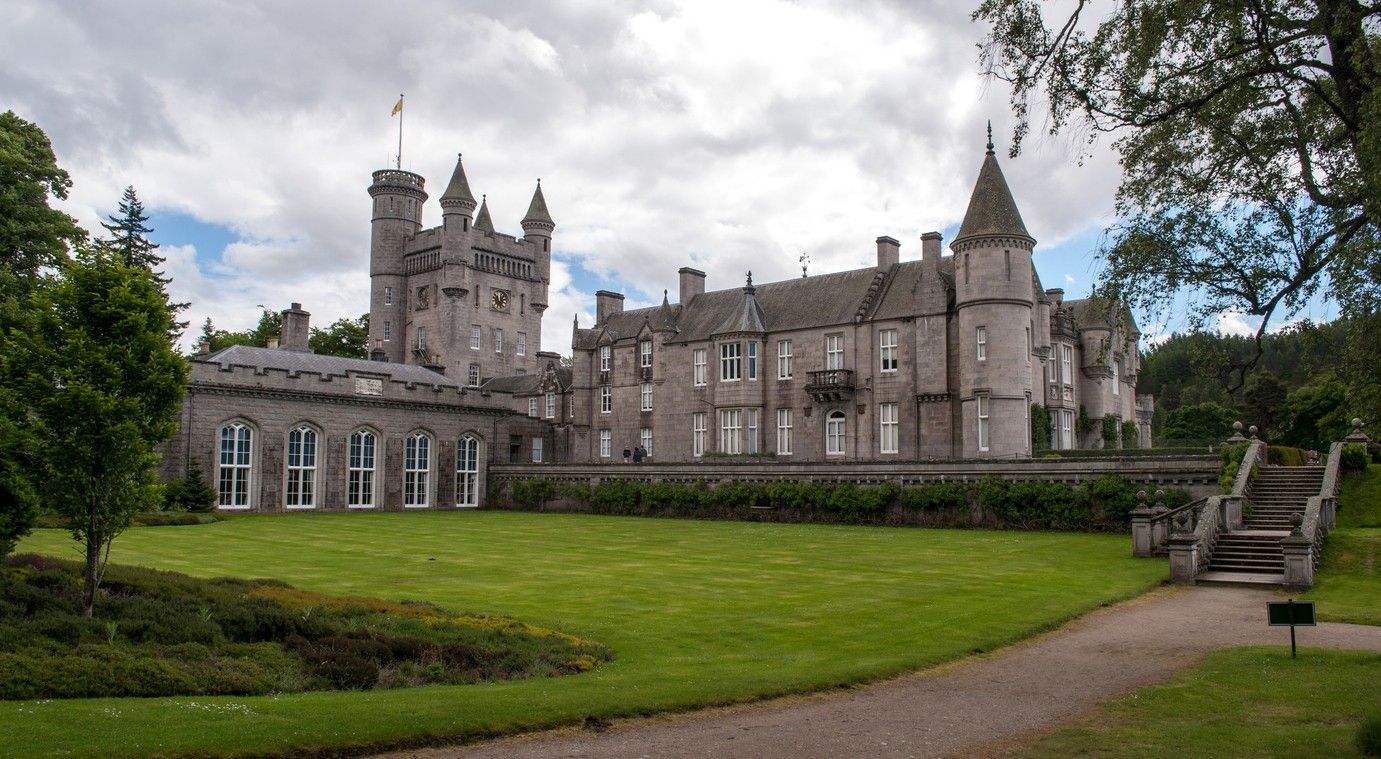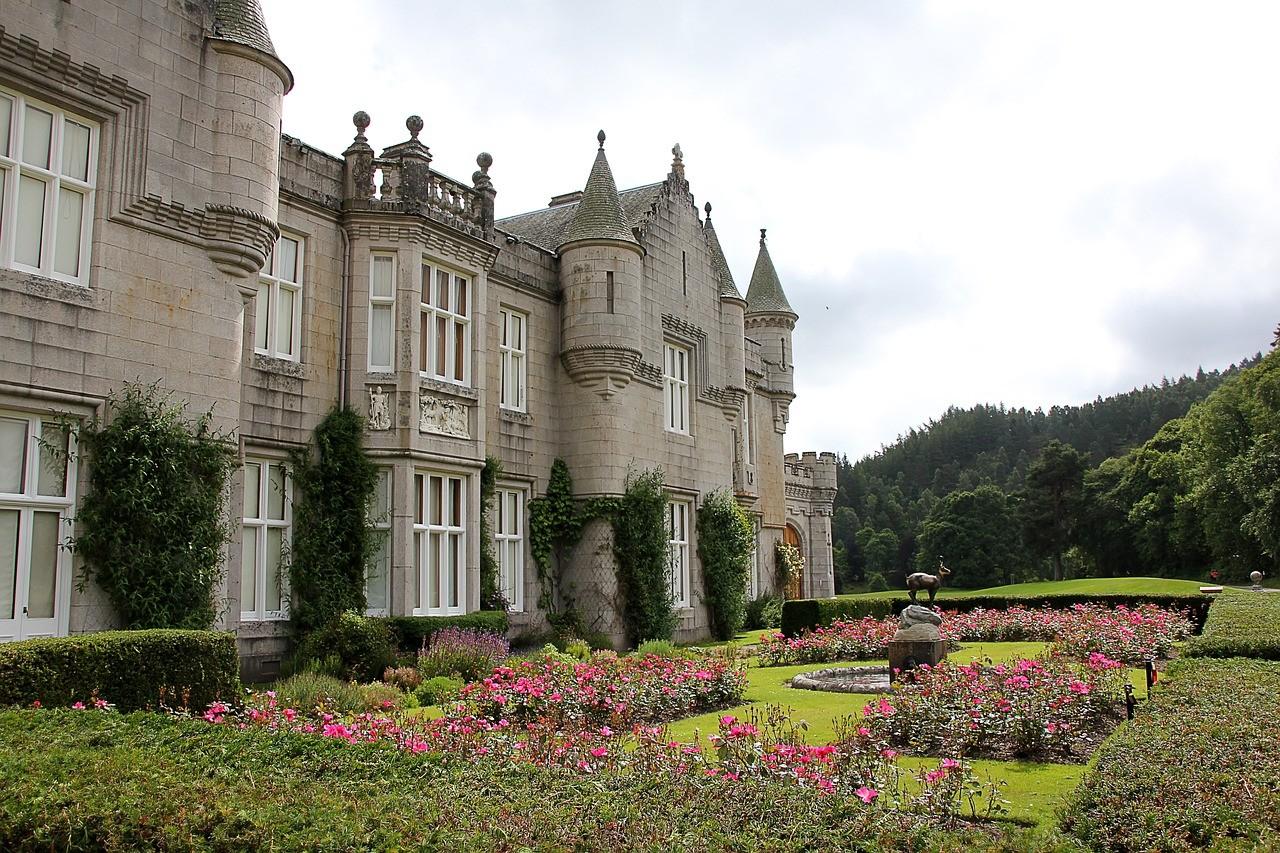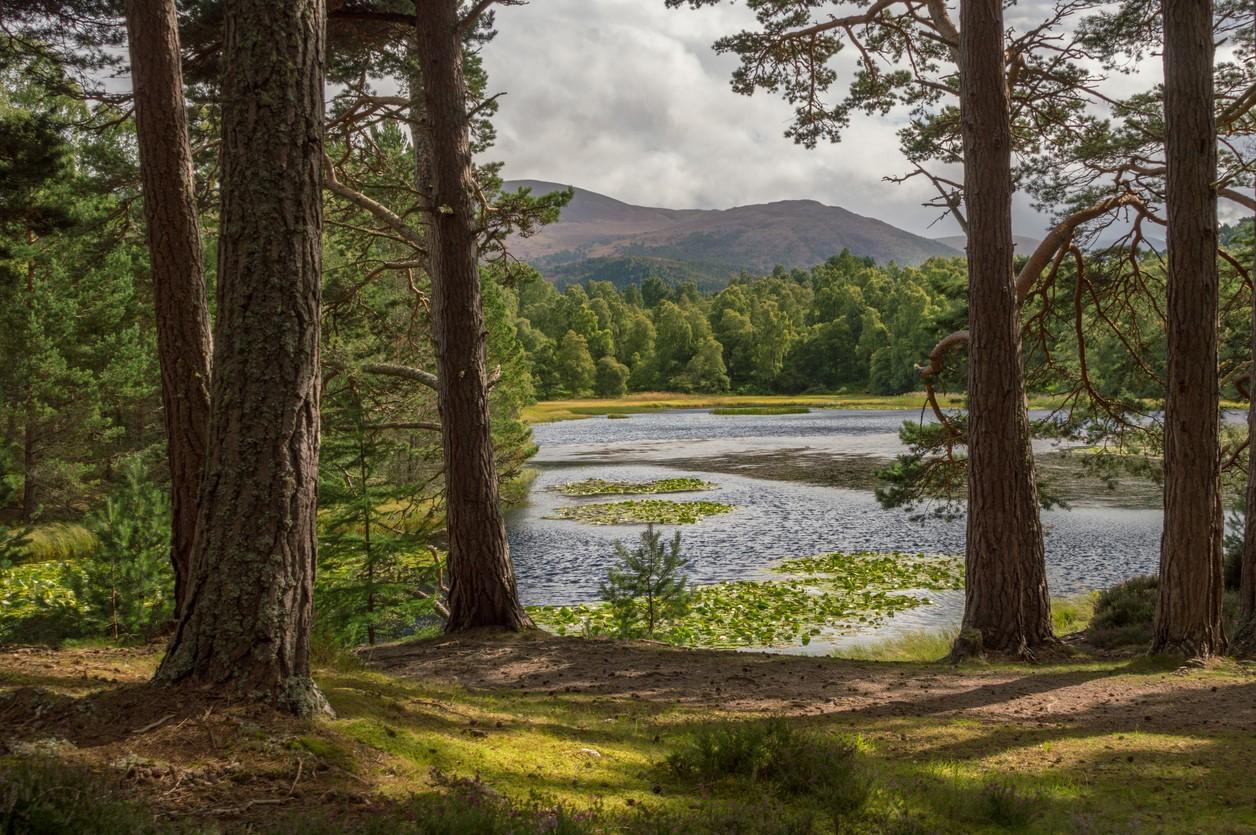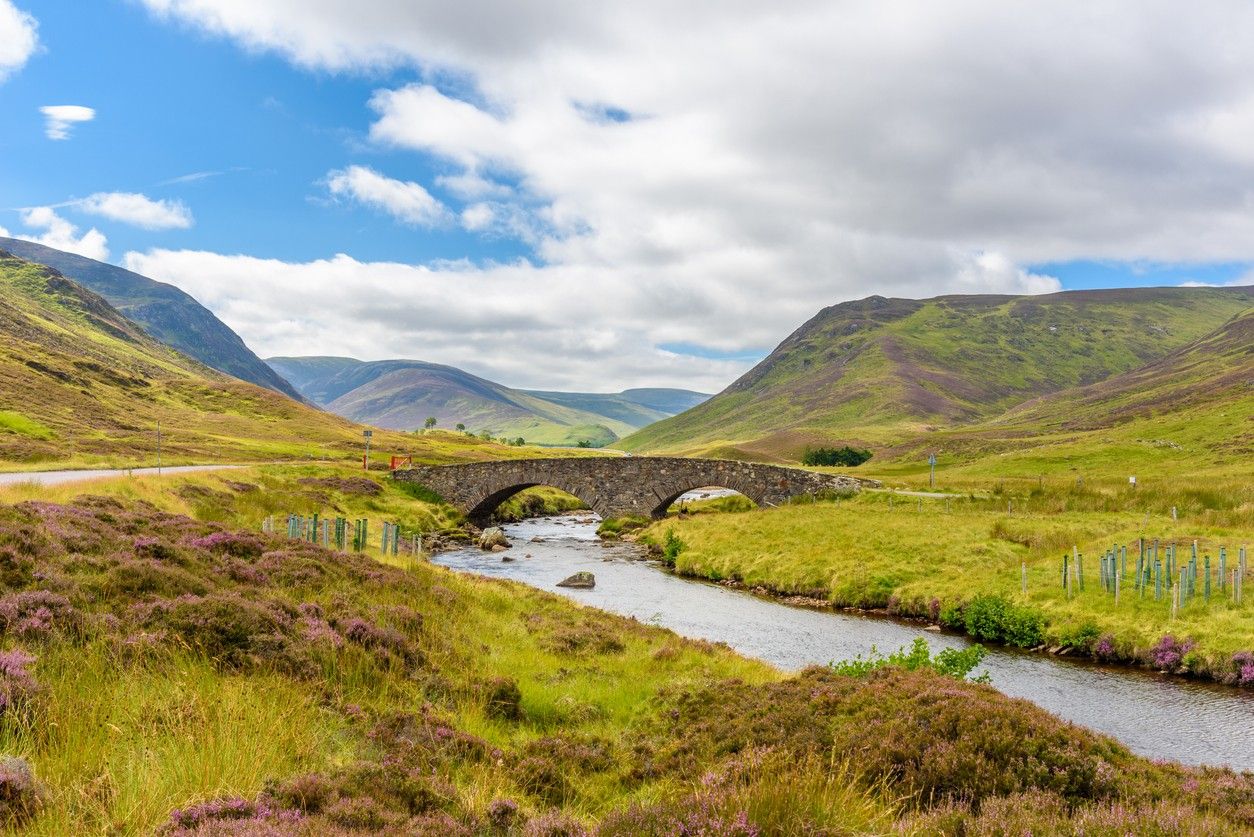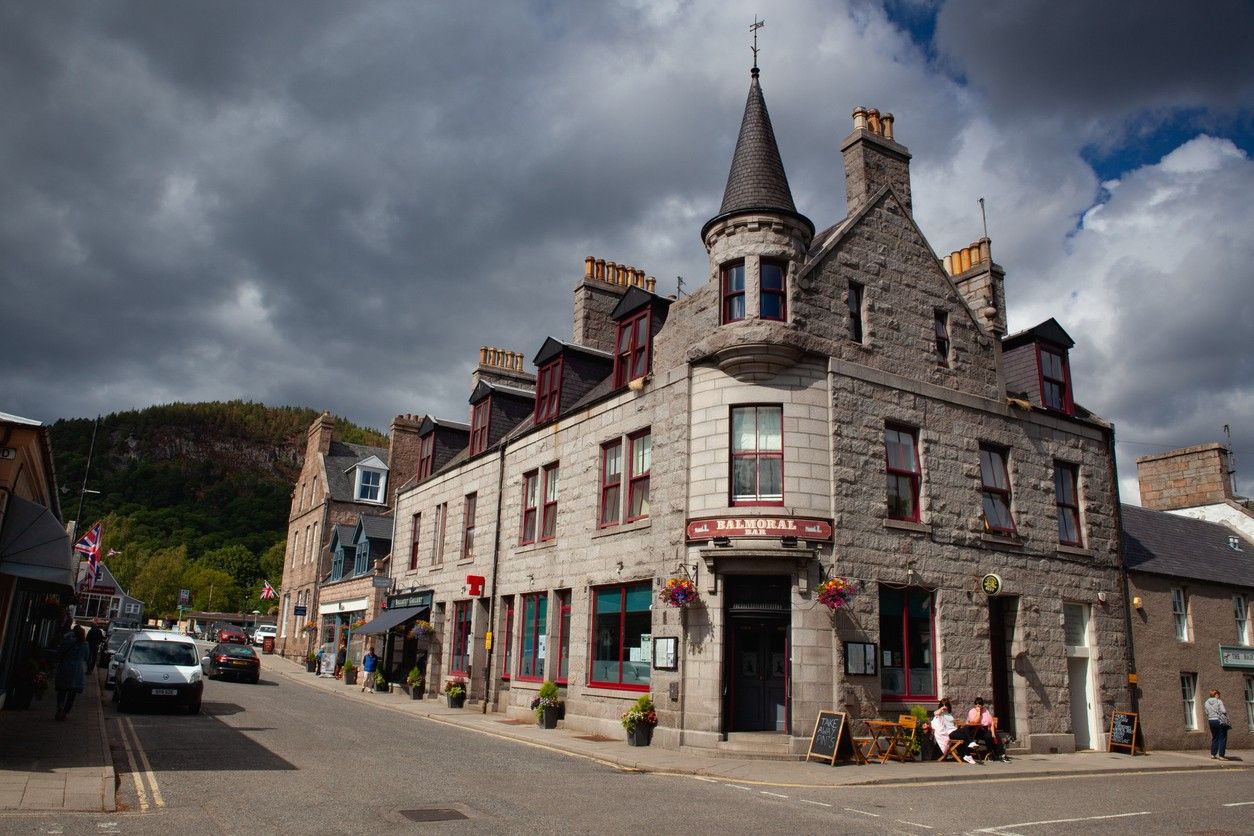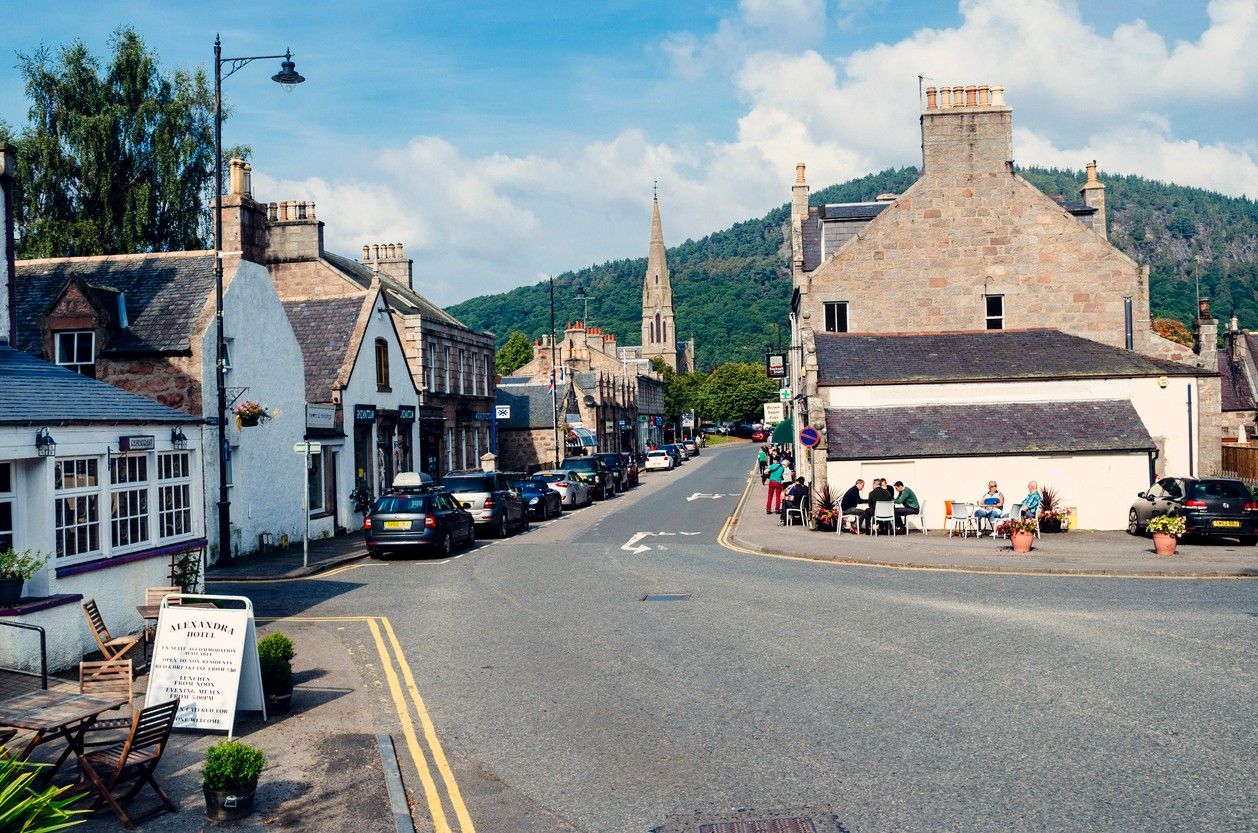Balmoral Castle, the majestic royal residence nestled in the heart of the Scottish Highlands, is a true gem that has captivated the hearts and minds of visitors for generations. This iconic landmark, with its rich history, stunning architecture, and breathtaking natural surroundings, has long been a symbol of the enduring connection between the British Monarchy and the rugged beauty of Scotland.
The History of Balmoral Castle
The story of Balmoral Castle dates back to the early 19th century when Queen Victoria and Prince Albert first discovered the enchanting region of Royal Deeside. Their acquisition of the Balmoral estate in 1848 and the subsequent construction of the grand, Scottish Baronial-style castle laid the foundation for this iconic royal residence, which has served as a beloved summer retreat for generations of the British Royal Family.
The Royal Acquisition and Initial Construction
The story of Balmoral Castle can be traced back to the early 19th century when Queen Victoria and Prince Albert first discovered the enchanting region of Royal Deeside. In 1848, the royal couple acquired the Balmoral estate, which at the time consisted of a modest castle and surrounding lands. Enchanted by the natural splendour of the area, they set out to transform the property into a true Highland retreat that would serve as a summer residence for the British Royal Family. Queen Victoria and Prince Albert were immediately captivated by the breathtaking beauty of the Balmoral estate, with its rolling hills, ancient forests, and crystal-clear lochs. Determined to create a grand and imposing structure that would complement the natural landscape, the couple commissioned the renowned Scottish architect William Smith to oversee the design and construction of a new castle.
Smith's design for the castle drew inspiration from the Scottish Baronial architectural style, with its distinctive towers, turrets, and ornate stonework. The construction process was a massive undertaking, requiring the labour of hundreds of skilled stonemasons, carpenters, and other tradespeople over several years. As the castle took shape, the royal couple closely monitored the progress, offering their input and guidance to ensure that the finished product would be a true testament to their vision. The completed structure, which was unveiled in 1856, was a sight to behold – a sprawling castle with multiple wings, each adorned with intricate carvings and embellishments that evoked the rich heritage of the Scottish Highlands. The interior was equally impressive, with grand drawing rooms, ornate dining halls, and a magnificent ballroom that would play host to countless formal events and gatherings over the years.
The Completed Castle and Subsequent Expansions
From the moment it was completed, Balmoral Castle became a beloved summer retreat for the British Royal Family. Queen Victoria and Prince Albert spent countless hours at the castle, immersing themselves in the natural beauty of the surrounding landscape and hosting a variety of social and cultural events. Over the subsequent decades, each generation of the Royal Family left its unique mark on the castle, overseeing a series of expansions and renovations that gradually transformed the property into the grand and imposing structure we see today. In the late 19th century, for example, Queen Victoria commissioned the construction of a new wing to accommodate her growing family, while in the early 20th century, King Edward VII oversaw the addition of a magnificent stained-glass conservatory.
The castle's interiors have also evolved, with successive royal residents putting their stamp on the various rooms and halls. The ornate wood panelling and intricate plasterwork that grace the castle's walls and ceilings, for instance, reflect the changing tastes and aesthetic sensibilities of the various monarchs who have called Balmoral Castle home. Today, Balmoral Castle stands as a testament to the enduring legacy of the British Monarchy and its deep connection to the Scottish landscape. The property has played a vital role in the life of the Royal Family for generations, serving as a summer retreat, a venue for important events and gatherings, and a cherished space where monarchs could find refuge from the demands of public life.
The Interiors of Balmoral Castle
The interior of Balmoral Castle is a true testament to the refined tastes and impeccable attention to detail that have long characterised the British Royal Family. From the opulent grandeur of the castle's Grand Ballroom to the more intimate and personal spaces of the Royal Apartments, every corner of the residence offers a glimpse into the enduring legacy of the monarchy and its deep connection to the Scottish Highlands.
The Grand Ballroom and Other Impressive Spaces
The interior of Balmoral Castle is a true testament to the refined tastes and impeccable attention to detail that have long characterised the British Royal Family. One of the most impressive features of the castle's interior is the Grand Ballroom, a vast and ornate space that has played host to countless formal events and gatherings over the years. Measuring an impressive 55 feet by 30 feet, the Grand Ballroom is a true masterpiece of Scottish Baronial architecture. The room's soaring ceilings, adorned with intricate plasterwork and ornate chandeliers, create an atmosphere of pure opulence, transporting visitors to a bygone era of regal splendour. The walls are lined with richly-hued wood panelling, meticulously carved with intricate designs that evoke the natural beauty of the surrounding landscape. The ballroom's focal point is the grand fireplace, a stunning example of the castle's meticulous craftsmanship. Flanked by ornate stone carvings and topped with an intricately detailed mantelpiece, the fireplace serves as a beautiful backdrop for formal receptions and other ceremonial events. The room's large windows, which offer breathtaking views of the Balmoral estate, further enhance the sense of grandeur and elegance that pervades the space.
In addition to the Grand Ballroom, the castle's interiors feature many other remarkable spaces that showcase the Royal Family's impeccable taste and attention to detail. The Drawing Room, for instance, is a beautifully appointed space with ornate furnishings, fine artwork, and intricate tapestries that reflect the personal preferences of the various monarchs who have occupied the castle over the years. The Dining Room, meanwhile, is a stately and formal space that has hosted countless lavish banquets and state dinners, its walls adorned with regal portraits and gilded accents. The Library, with its towering bookcases and cosy seating areas, is another highlight of the castle's interior, offering a more intimate and intellectual space for relaxation and contemplation. Visitors can easily imagine the various royal residents curled up in one of the room's plush armchairs, surrounded by the vast collection of books and manuscripts that line the shelves.
Exploring the Private Royal Apartments
While the grand public spaces of Balmoral Castle are undoubtedly impressive, the castle's more intimate, private areas offer a fascinating glimpse into the personal lives of the British Royal Family. Visitors to the castle's interior can explore the Royal Apartments, a series of rooms and suites that were designed to provide the monarchy with a comfortable and secluded retreat from the demands of public life. One of the most intriguing spaces within the Royal Apartments is the Queen's Bedroom, a beautifully appointed chamber that has served as the personal sleeping quarters for numerous monarchs over the years. The room is adorned with luxurious fabrics, ornate furniture, and delicate personal touches that reflect the tastes and preferences of the individual residents. Visitors can imagine the Queen herself relaxing in this serene and private sanctuary, surrounded by the stunning natural beauty of the Balmoral estate.
Another highlight of the Royal Apartments is the Prince's Dressing Room, a meticulously curated space that was designed to meet the personal grooming needs of the male members of the Royal Family. The room is outfitted with a variety of specialised furnishings and equipment, providing a fascinating insight into the daily rituals and routines of the castle's royal inhabitants. Throughout the Royal Apartments, visitors will find a wealth of intriguing historical artefacts and personal items that offer a unique window into the lives of the British monarchs. From the official state robes and ceremonial regalia to the more intimate, personal possessions of the royal residents, these spaces provide a captivating and immersive experience that truly brings the castle's storied history to life.
The Grounds of Balmoral Castle
The Balmoral Castle estate is a true naturalist's paradise, encompassing over 50,000 acres of pristine Scottish countryside. Visitors can explore the meticulously maintained Balmoral Castle Gardens, discover the property's historic buildings, and immerse themselves in a variety of outdoor activities, all while surrounded by the breathtaking natural beauty of the Highlands.
The Balmoral Castle Gardens
One of the most enchanting features of the Balmoral Castle estate is the meticulously maintained Balmoral Castle Gardens, which were originally designed and curated by Prince Albert himself. Spanning over 50 acres, these lush and vibrant gardens are a true horticultural masterpiece, showcasing the diverse and stunning flora of the Scottish Highlands. One of the most impressive features of the Balmoral Castle Gardens is the extensive and meticulously curated collection of plant species, many of which were personally selected and cultivated by Prince Albert. The prince, an avid horticulturist, took great pride in his role as the gardens' primary designer, carefully considering the layout, colour schemes, and overall aesthetic to create a truly immersive and harmonious outdoor experience.
Throughout the grounds, visitors will find a wealth of plant labels and informational signs that provide fascinating insights into the various species and their significance within the context of the castle's history and the surrounding landscape. From the rare and endangered Scottish wildflowers that thrive in the castle's protected micro-climate to the stately oak trees that have stood for generations, every element of the gardens tells a story about the enduring connection between the Royal Family and the natural world. The estate offers a network of well-maintained walking trails that wind through the lush greenery, providing breathtaking views of the surrounding countryside. Whether visitors are interested in the gardens' horticultural highlights, their historical significance, or simply their serene natural beauty, a stroll through this enchanting outdoor space is sure to leave a lasting impression.
Historic Buildings
In addition to the breathtaking natural beauty of the Balmoral Castle estate, visitors can also explore many historic buildings that are located on the property. One of the most notable historic structures is the picturesque Crathie Kirk, a 19th-century church that has long been associated with the Royal Family and has served as the place of worship for many monarchs over the years. The church, with its striking granite exterior and elegant Gothic-inspired architecture, stands as a testament to the enduring relationship between the British Monarchy and the Scottish Highlands. Beyond the Crathie Kirk, the Balmoral Castle estate is home to a variety of other historic structures, including former servant quarters, stables, and outbuildings that have been meticulously preserved to offer visitors a glimpse into the castle's rich past. These structures, many of which date back to the 19th century, provide a fascinating contrast to the grand and imposing main castle, offering a more intimate and immersive experience for those exploring the grounds.
Hiking in the Estate
Visitors can explore the property's extensive network of trails, which wind through the lush forests and provide breathtaking views of the surrounding mountains and lochs. One of the most popular hiking destinations within the Balmoral Castle estate is the Lochnagar, a majestic mountain that rises over 3,700 feet above sea level. The hike to the summit of Lochnagar is a challenging but rewarding experience, offering stunning panoramic views of the surrounding countryside. As visitors ascend the mountain, they are treated to an ever-changing tapestry of natural wonders, from the ancient, gnarled pine trees that cling to the slopes to the vibrant alpine wildflowers that dot the landscape. Throughout the hike, adventurous visitors may have the opportunity to spot a variety of native wildlife, including the elusive red deer, the majestic golden eagle, and the shy Scottish wildcat. The estate's commitment to conservation has helped to preserve the delicate balance of the local ecosystem, ensuring that these and other rare and threatened species can continue to thrive within the Balmoral Castle grounds. For those who prefer a more leisurely pace, the Balmoral Castle estate offers a network of well-maintained walking trails that wind through the lush gardens and along the banks of the River Dee. These gentler routes provide visitors with the chance to immerse themselves in the serene beauty of the Scottish Highlands, taking in the sights and sounds of the natural world at a more leisurely pace.
- Lochnagar Trail — A challenging 6-mile hike to the summit of the majestic Lochnagar mountain, offering breathtaking views of the surrounding countryside.
- River Dee Path — A gentle 3-mile walking trail that follows the banks of the River Dee, providing a peaceful and scenic stroll through the heart of the estate.
- Ballochbuie Forest Trail — A 4.5-mile loop through the ancient Ballochbuie Forest, allowing visitors to explore the estate's diverse array of native flora and fauna.
- Abergeldie Trail — A moderate 5-mile trail that winds through the rolling hills and valleys of the Abergeldie area, boasting stunning panoramic vistas.
- Crathie Kirk Path — A short 1-mile route connecting the Balmoral Castle grounds to the historic Crathie Kirk, offering a glimpse into the estate's religious heritage.
- Loch Muick Trail — A challenging 9-mile hike around the serene Loch Muick, with the opportunity to spot wildlife and take in the breathtaking mountain scenery.
- Glas Allt Shiel Trail — A 3.5-mile loop that leads visitors to the picturesque Glas Allt Shiel waterfall, showcasing the estate's natural beauty.
- Balmoral Cairns Route — A 2-mile circular path that visits several ancient burial cairns scattered throughout the Balmoral grounds, providing insight into the region's rich cultural history.
Additional Outdoor Pursuits
In addition to hiking, the Balmoral Castle estate also provides opportunities for a variety of other outdoor activities and adventures. One popular pursuit is cycling, and the estate offers visitors the chance to rent bikes from the on-site visitor centre and explore the property's extensive network of scenic trails. Whether tackling the more challenging routes that wind through the surrounding hills and forests or opting for a leisurely ride along the banks of the River Dee, cycling provides an exhilarating way to experience the grandeur of the Balmoral Castle estate.
For anglers, the crystal-clear waters of the River Dee offer superb fly-fishing opportunities, with the chance to reel in a variety of trout and salmon species. The estate's conservation efforts have helped to preserve the health and vitality of the river's ecosystem, ensuring that it remains a premier destination for fishing enthusiasts. Birdwatchers, too, will find much to delight in at the Balmoral Castle estate, with the opportunity to spot a wide array of avian species that make their homes in the surrounding forests and wetlands. From the majestic golden eagle to the elusive capercaillie, the estate is a true haven for birding enthusiasts, who can enjoy the thrill of spotting these magnificent creatures in their natural habitats.
Conservation and Wildlife
For nature enthusiasts, the Balmoral Castle estate is a true paradise, offering a wealth of opportunities to observe and appreciate the diverse flora and fauna of the Scottish Highlands. The estate's commitment to conservation has helped to preserve the delicate balance of the local ecosystem, ensuring that visitors can enjoy the natural splendour of the region in all its glory. Throughout the property, visitors will find evidence of the estate's conservation efforts, from the meticulously maintained Balmoral Castle Gardens to the lush, undisturbed forests that cover much of the surrounding landscape. The Balmoral team works tirelessly to protect the habitats of the region's native species, ensuring that they can continue to thrive and flourish within the estate's boundaries. One of the most remarkable examples of the estate's conservation work is its efforts to protect the elusive Scottish wildcat. This rare and endangered feline, which is often referred to as the "Highland Tiger," is a true icon of the Scottish Highlands, and the Balmoral Castle estate has become a crucial sanctuary for this magnificent creature.
Through a combination of habitat preservation, wildlife monitoring, and public education initiatives, the estate's conservation team has worked to safeguard the Scottish wildcat and other threatened species that call the Balmoral lands home. Visitors may even have the opportunity to catch a glimpse of these reclusive felines or observe the dynamic interplay of the estate's diverse array of birds, insects, and small mammals. By prioritising the preservation of the Balmoral Castle estate's natural resources, the Royal Family and the estate's caretakers have ensured that the grandeur and beauty of this unique corner of the Scottish Highlands will be preserved for generations to come. Whether one's interests lie in hiking, birdwatching, or simply immersing oneself in the serene majesty of the great outdoors, the Balmoral Castle estate offers a truly unparalleled experience for nature lovers and outdoor enthusiasts alike.
Cairngorms National Park
The Cairngorms National Park is a vast wilderness area that covers over 1,750 square miles, making it the largest national park in the United Kingdom. This protected landscape is a true haven for outdoor enthusiasts, offering a wealth of opportunities for hiking, cycling, wildlife watching, and other immersive experiences in the great outdoors. At the heart of the Cairngorms National Park lies a massif of towering, rounded mountains, the highest of which reach over 4,000 feet in elevation. These ancient, glacially-carved peaks are the remnants of a once-mighty mountain range, their imposing presence a testament to the dynamic geological forces that have shaped the Scottish Highlands over aeons. Visitors to the park can hike to the summits of these majestic mountains, taking in breathtaking panoramic views that stretch across the rugged, heather-clad hills and valleys below.
In addition to its dramatic mountain landscapes, the Cairngorms National Park is renowned for its exceptional biodiversity, boasting a wide array of plant and animal species that have adapted to thrive in the region's unique environmental conditions. From the ancient Caledonian pine forests that cling to the slopes to the vibrant wildflower meadows that dot the glens, the park's diverse habitats are a veritable treasure trove of botanical wonders. The Cairngorms are also home to a remarkable collection of wildlife, including iconic species such as the red deer, the golden eagle, and the elusive Scottish wildcat. Visitors to the park may have the opportunity to spot these majestic creatures in their natural settings, observe their behaviours and gain a deeper appreciation for the delicate balance of the Highlands' ecosystems. For those seeking a more active exploration of the Cairngorms National Park, the region offers a wealth of opportunities for outdoor adventure. Hiking enthusiasts can tackle a network of well-maintained trails that wind through the park's diverse landscapes, from the rugged mountain paths to the gentler, forested routes. Cyclists, too, can explore the park's extensive network of scenic byways, taking in the stunning vistas at a more leisurely pace.
In the winter months, the Cairngorms transform into a premier destination for winter sports enthusiasts, with several renowned ski resorts offering world-class downhill and cross-country skiing, snowboarding, and snowshoeing experiences. The park's pristine alpine environments provide the perfect backdrop for these snow-based activities, allowing visitors to immerse themselves in the serene beauty of the Highlands while indulging in their favourite cold-weather pursuits. Beyond the thrill of outdoor adventure, the Cairngorms National Park offers visitors a unique opportunity to disconnect from the stresses of everyday life and immerse themselves in the tranquil beauty of the natural world. Whether it's wandering through the ancient forests, watching for wildlife from a secluded hide, or simply sitting in quiet contemplation by a glistening loch, the park provides a restorative and rejuvenating experience that allows the mind and body to recharge. For many visitors to the Balmoral Castle estate, a trip to the Cairngorms National Park is an essential part of their overall experience. By combining the grandeur of the historic royal residence with the unspoiled wilderness of the surrounding countryside, travellers can gain a deeper appreciation for the enduring bond between the British Monarchy and the natural splendour of the Scottish Highlands.
Exploring the Surrounding Town of Ballater
The castle's idyllic location in the heart of the Scottish Highlands, just a short drive from the charming town of Ballater, makes it an ideal destination for those looking to immerse themselves in the region's rich history and culture. Ballater serves as the gateway to the Cairngorms National Park, and it offers a wealth of historic attractions, quaint shops, and delectable culinary offerings that complement the experience of visiting Balmoral Castle. One of the town's most iconic landmarks is the Ballater Station, a beautifully preserved 19th-century railway station that once served as the primary transportation hub for visitors to Balmoral Castle. Today, the station has been transformed into a museum and visitor centre, providing guests with a fascinating glimpse into the town's deep-rooted connection to the Royal Family and the castle.
As visitors stroll along Ballater's charming High Street, they'll find a diverse array of independent boutiques, art galleries, and cosy cafes that showcase the region's thriving creative and culinary scene. From locally sourced artisanal goods to traditional Scottish fare, the town offers a wealth of opportunities for visitors to immerse themselves in the unique cultural heritage of the Highlands. Ballater serves as an excellent base for accessing the nearby Cairngorms National Park. Visitors can embark on a variety of outdoor adventures, from scenic hikes and mountain biking to wildlife spotting and fly fishing, all within a short distance of the town and Balmoral Castle. By combining a visit to the iconic royal residence with an exploration of the surrounding town and natural landscapes, travellers can truly capture the essence of the Scottish Highlands and the enduring legacy of the British Monarchy. Whether you're interested in the castle's rich history, its architectural grandeur, or the breathtaking natural beauty of the region, Balmoral Castle and the town of Ballater offer a captivating and unforgettable experience.
Visiting Balmoral Castle
Purchasing Tickets and Guided Tours — Balmoral Castle is open to the public during the summer months, offering visitors a unique opportunity to explore the historic residence and its stunning grounds. Balmoral Castle tickets can be purchased online or at the on-site visitor centre, and guided tours are available for those who wish to delve deeper into the castle's rich history and architectural features.
Related Articles

Let us know you agree to cookies
We use marketing, analytical and functional cookies as well as similar technologies to give you the best experience. Third parties, including social media platforms, often place tracking cookies on our site to show you personalised adverts outside of our website.
We store your cookie preferences for two years and you can edit your preferences via ‘manage cookies’ or through the cookie policy at the bottom of every page. For more information, please see our cookie policy.
